Seerley Hall (1908)
President Homer Seerley took a serious and progressive view of the role of a college library. As early as his first report to the Normal School's Board of Directors after he was hired in 1886, he stated that "a good library is a necessity . . . it is a requisite. It should come before teachers and students." He went on to say, "A school to do a great educational work must have an extensive, well chosen library, a well-supported reading room containing current magazines and literature, and a member of the faculty as librarian, whose chief work will consist in teaching students how to use books."

President Seerley was well ahead of his contemporaries in expressing these views. Few college presidents in 1887 were so far-sighted that they conceived of a library as anything more than a random collection of books shelved in an extra classroom. Yet even at this early date, President Seerley, the head of a small Midwest normal school, saw the need for a carefully selected collection, located in an appropriate and purposely built setting, and attended by a professional librarian who could provide reference service and bibliographic instruction.
President Seerley did achieve his vision, though some parts of it took time. The book and journal collection grew, he hired professional staff, and, in 1894, he set aside a reasonably well-suited portion of the new Administration Building to serve as a library.
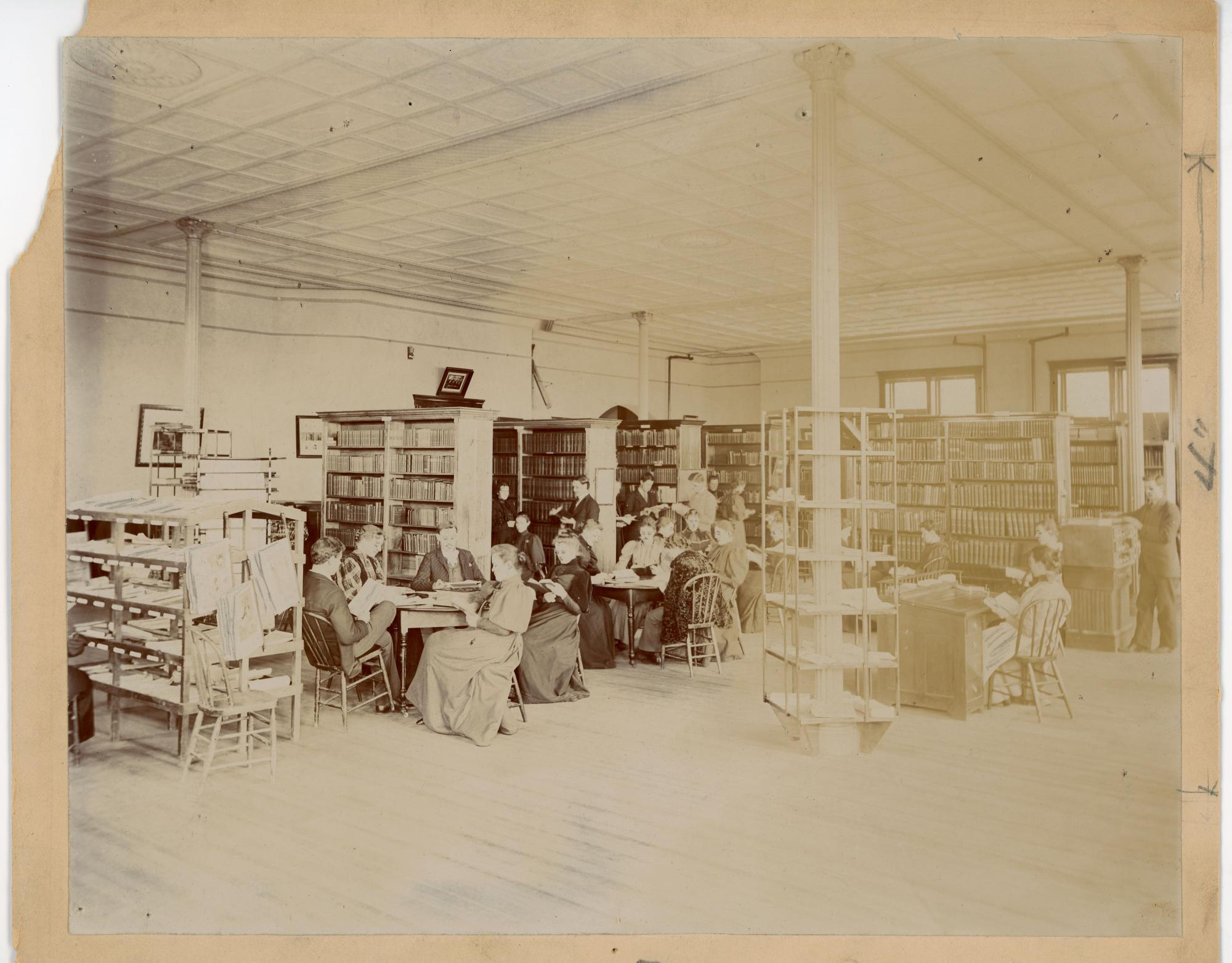
But he still believed that the school needed a purposely designed structure, completely devoted to library functions. President Seerley's case was strengthened by a devastating fire that destroyed 25,000 books at the University of Iowa in 1897.
Funds became available for campus construction projects from the millage tax, a statewide levy on real estate. But the school's Board of Directors struggled to find an appropriate location for a new library. The first campus plan, produced in 1905, had tentatively placed the library in the "front yard", a bit southeast of what is now Lang Hall. The octagonal building would be a campus showpiece. However, both the odd design and the location were ultimately discarded. The octagonal library would become one of the campus phantom facilities.
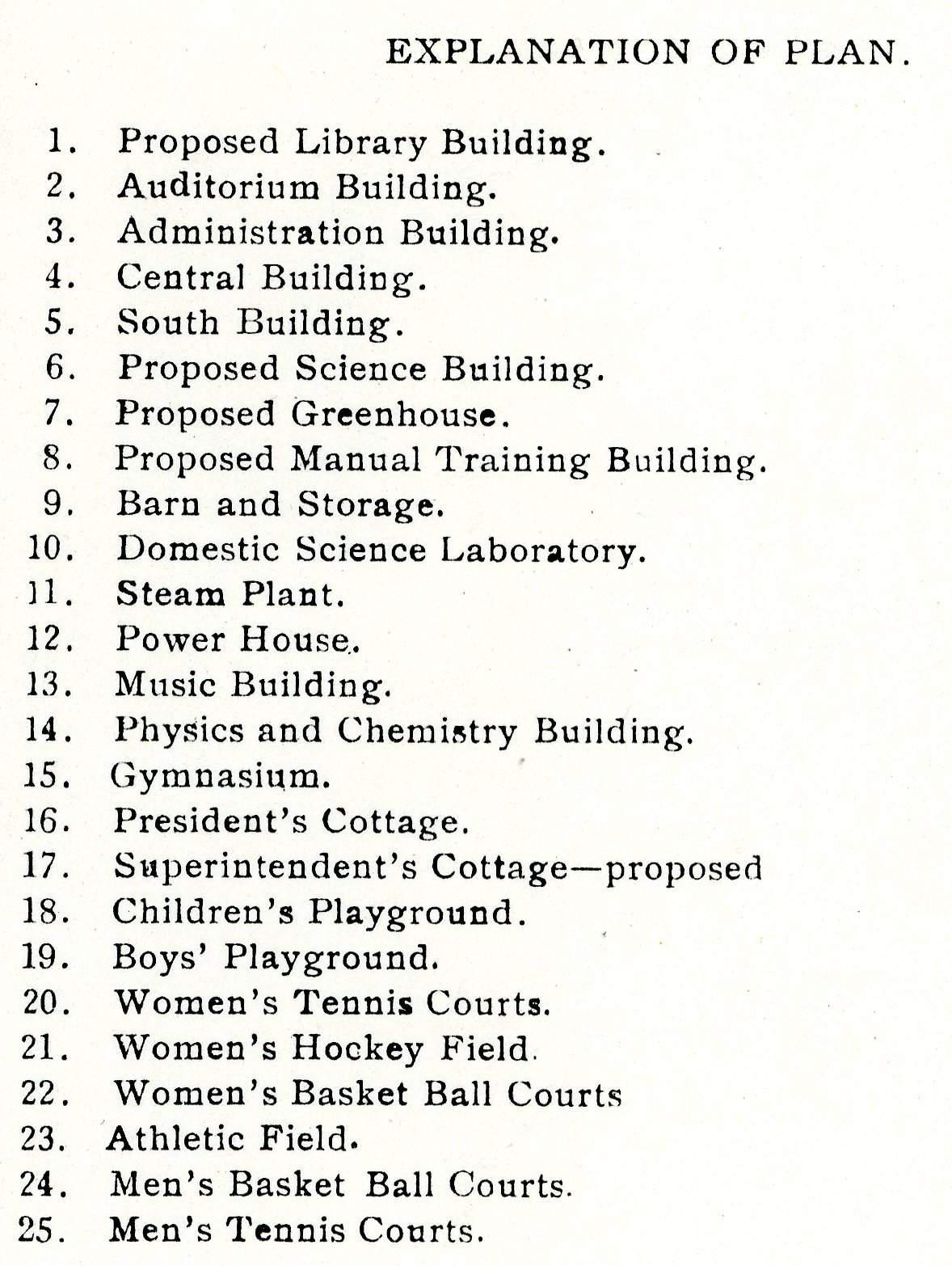

In 1906, the Board of Directors authorized President Seerley to a take a month-long trip to survey libraries in other parts of the country. In 1907, the Iowa General Assembly authorized the expenditure of as much as $175,000 for a new library building. The building would also include quarters for the museum and natural history specimens. And, after long debate, the Board of Directors decided to locate the new library on the southeast corner of the developing campus quadrangle. This site is building number 6 on the campus plan above, where a science building was originally planned. Architects Proudfoot and Bird, who had designed Lang Hall just a few years earlier, also designed this building. Construction began in late 1907, though the cornerstone was dated 1908.
The new Library opened on May 2, 1911. It rained on moving day, so books had to be carried through the utility tunnel between the Old Administration Building and the Library. A formal dedication was held on May 18, 1911, in conjunction with the Spring Music Festival. President Seerley said that the opening of the new Library was "the most important improvement at the Teachers College in the past twenty years." The new building was an impressive structure for a modest Midwest teachers college. Its neoclassical architectural style, marble flooring, and large reading room represented a major achievement for the school. The Library and Lang Hall presented a grand impression to anyone approaching campus from the east.

Once the Library was built, President Seerley continued his support of the collections and facilities. In 1921, shelving was added that doubled the capacity of the book storage area. President Seerley's acquisitions allocations exceeded the total supplies and equipment for all of the instructional departments combined.
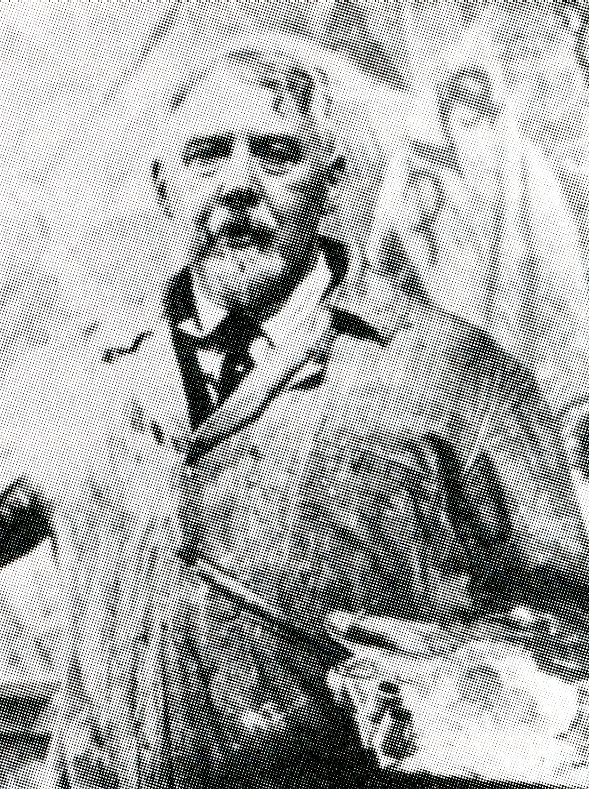
At the end of World War I, the Board decided that the walls of the Library reading room needed to be decorated. Board member E. P. Schoentgen approached William de Leftwich Dodge, a well-known artist from New York, about painting murals for the room. For a fee of $5000, Dodge painted two large 12 X 40 foot allegorical murals, "Education" and "In Memoriam", in his Long Island, New York, studio and shipped them in pieces to Cedar Falls. The first, "Education", mounted on the south wall, attempted to portray the value of the Teachers College mission. The second, "In Memoriam", mounted on the north wall, appealed to the very fresh memories of World War I, in which many Teachers College faculty, students, and alumni had served. These two murals were installed in September 1920. The Board of Education and President Seerley were deeply impressed by the quality of the work. The Board immediately commissioned Dodge with a $10,000 fee to produce more murals for the west wall of the reading room. By September 1921, Dodge had completed three new panels: "Agriculture", "The Council of Indians", and "The Commonwealth".
While modern eyes may find fault with the style and content of some of the Dodge work, the expenditure of such a significant sum on art (almost 9% of what it cost to construct the building) for a state facility in 1920 is impressive. By way of contrast, the current Iowa law that requires .5% of a state building's budget to be spent on art frequently causes outraged reaction from the public. President Seerley saw the Library as a nearly complete educational experience. In addition to the growing book collection and the murals, the Library included sheet music, children's books, museum displays, and prints of artwork. Head Librarian Anne Stuart Duncan developed the idea of using the lower hall in the Library as an art gallery. There she displayed several hundred reproductions of "the best in art of all nations and all ages" as part of an effort "to bring the treasures of art to every student in school".
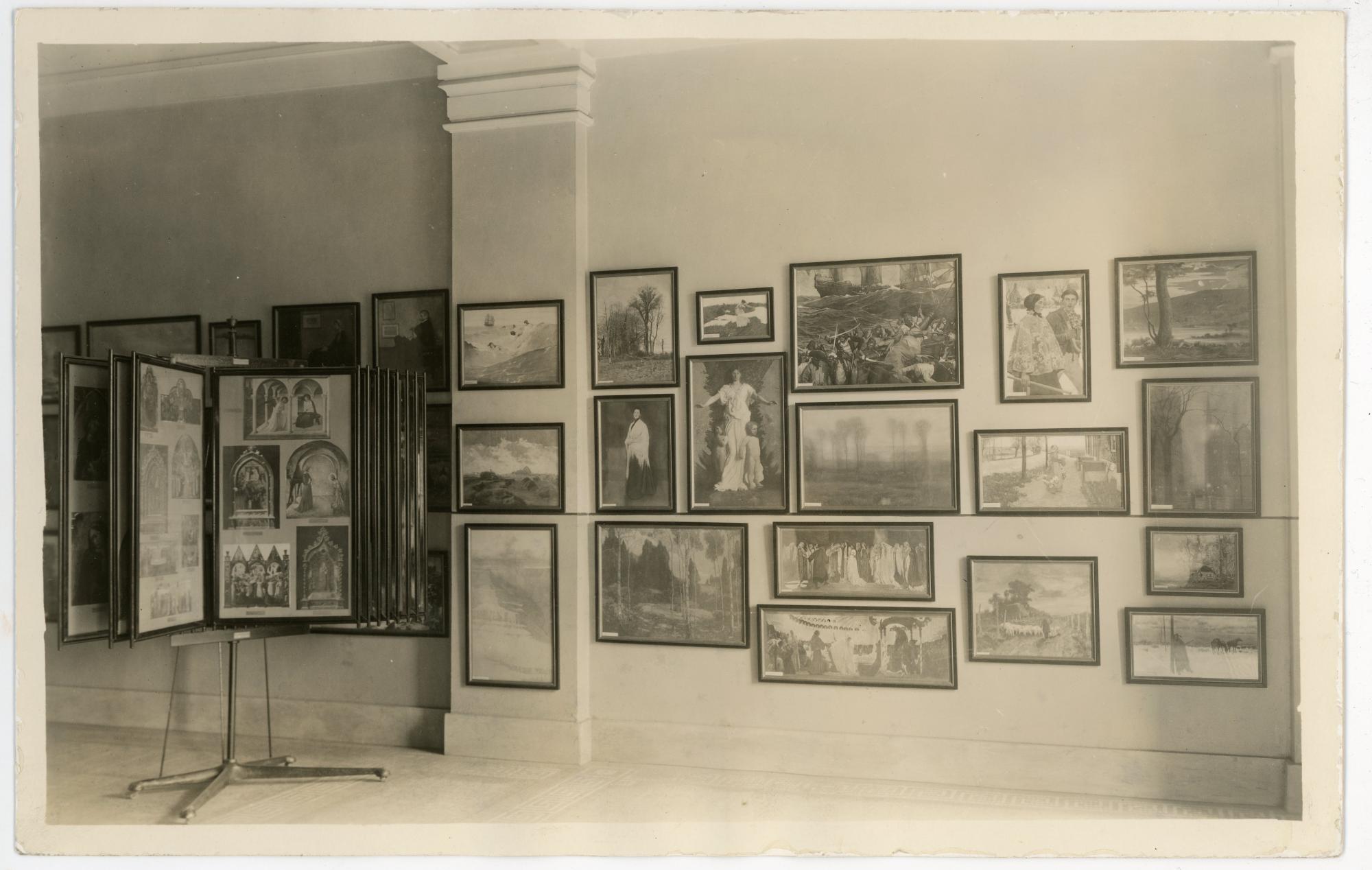
The Library proved to be very popular with students both for study and for other purposes. The conflict between those who were seriously studying and those who were socializing would be a recurrent theme in the student newspapers over the years. As early as 1914 the College Eye printed a parody of James Whitcomb Riley's "Little Orphan Annie":
"When you're a-fooling in the library, a-havin' lots of fun,
A-laughing and a-gibbering as if your time had come,
You'd better watch your corners and keep kinder looking out
Er the librarians'll get you if you don't watch out."
Miss Duncan said in 1929 that "the Library is most popular in the evening from seven to nine o'clock. But what percentage of the students is there to study is uncertain." The College Eye reporter who interviewed Miss Duncan jokingly suggested that students who entered the Library might be required actually to have a book in front of them. Or perhaps evening hours might be limited to upperclassmen. In 1930, the College Eye recounted an overheard conversation. One student asked a friend if she were going to the Library that night. The friend replied, "No, I have to study tonight." At least until the opening of the Commons in 1933, the Library functioned as an important, though unintended, campus social center.

In 1930, the Library established a documents room with about 10,000 volumes of federal, state, and municipal documents. In 1931 a new women's lounge opened near the north entrance. This was a "suitable place for the young ladies who wish to rest, to chat, or to powder their noses before proceeding to the reading rooms." Also in 1931, the Library received new window sashes on the east side. Unfortunately, those windows were decorative and did not open. They provided no ventilation for the reading room, which could be brutally hot during warm weather. The College Eye reported that one enterprising student, Anna Mae Sander, brought her own electric fan to the reading room during the terribly hot summer of 1936.

As early as 1940, with air conditioning available in many theaters, lunch counters, and dime stores, student Katharine Schaffert called for the installation of an air conditioning system in the Library. She concluded her letter to the College Eye: "Our state would harvest rich dividends in greater efficiency in teaching if a little more were invested in the health and welfare of its teachers in summer school." After President Malcolm Price walked through the reading room in the summer of 1941, large electric floor fans were installed.

From the time that the Library opened in 1911, the book stacks had been closed. Patrons who wanted a book placed a request at the service desk. In 1944 students began to ask if the stacks could be open for browsing. In 1945, the horseshoe-shaped reading room desk was replaced by a simpler, more functional desk. Circulation Library Evelyn Mullins believed that the new desk would speed up and simplify service. The Library also installed a book return in a slot in the north door at this time.
In 1949, the Library undertook a major book shift. Periodicals went to the first level and education and fiction books went to the second floor. About one-third of the students and faculty turned out to help with the move. Also in 1949, new steps were installed on the south and east sides of the Library.
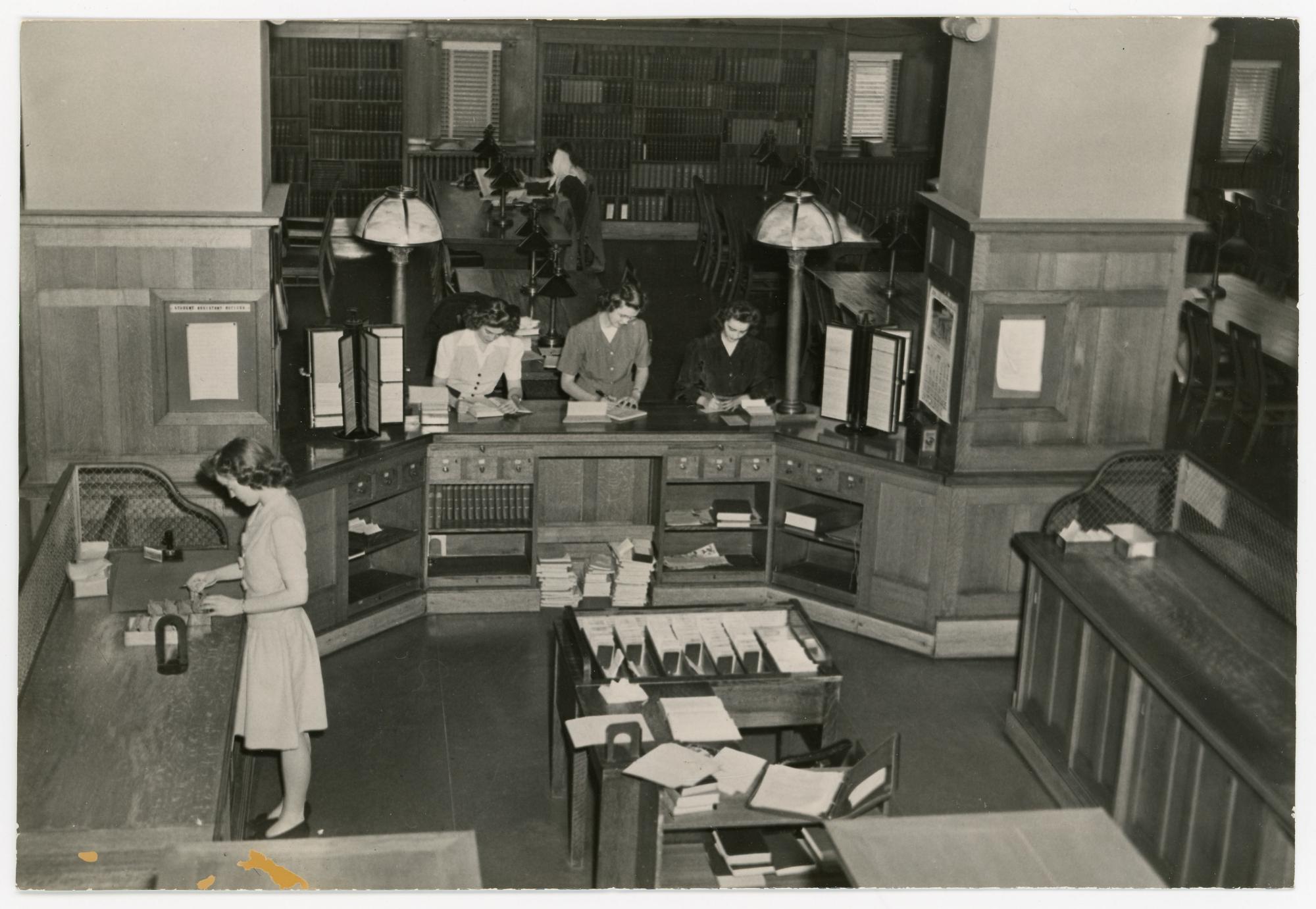
When Donald O. Rod became Head Librarian in 1953, the Library began to undergo a series of changes. Some of these changes were aimed at improving conditions and service in the old building. Some changes anticipated a move into a new building at some point. The Library added microfilm of the Des Moines Register and the New York Times to its collections and made changes in reserve book circulation policies in 1954. Mr. Rod also tightened security measures by placing periodicals in plain view of a service desk and by requiring identification cards for checking out library material. In 1959, to combat the continuing problem of theft, the Library instituted a checkpoint system through which everyone had to pass when they left the building. In 1956, large ceiling exhaust fans were installed over the stacks. In 1957, the old tunnel that led from the Old Administration Building to the Library was finally filled in. It had been closed due to its weakened condition for some time.

In 1956, college officials had already begun talking about building a new library and turning the old Library into a classroom building. In 1961, with plans for a new Library under way, college officials were considering a new name for the old Library Building, once library services moved to a new location. Registrar Marshall Beard, an early leader of campus planning efforts, said that it might be appropriate to name the old Library in honor of Homer Seerley. President Seerley's name had already been given to Seerley Hall for Men (now a part of Baker Hall) back in 1937, but Mr. Beard believed that a more significant building should bear the Seerley name. In the summer of 1961, the Board of Regents approved the recommendation to name the old Library in honor of President Seerley, as soon as library services ceased there. The name change actually occurred in January 1964.
The Regents began planning for the remodeling of the old Library in 1962 with a project budget request of $450,000. The project would include construction of business education classrooms and offices, fire safety modifications, and (at last!) air conditioning. In January 1964 the Regents approved $385,500 for the remodeling project in what was by then called Seerley Hall.

With the new Library (now Rod Library) about to open, the Museum, located on the fourth floor of Seerley Hall, opened for one last time on the evening of July 15, 1964. Plans called for the Museum to close for a year and then to re-open in the old Library reading room, where it would be located until new quarters could be developed in either a free-standing building or a wing of the new Science Building. However, plans changed following the fire that destroyed Central Hall on July 22, 1965. To compensate for classrooms lost in the fire, the Regents and college officials decided that it would be better to convert existing facilities, such as the old Library reading room, into classrooms than to build a new classroom and office building. In order to divide the large reading room into smaller spaces, work crews took down and put into storage the Dodge mural mounted on the west wall. The Museum collection was eventually shifted to the Physical Plant building west of Hudson Road.
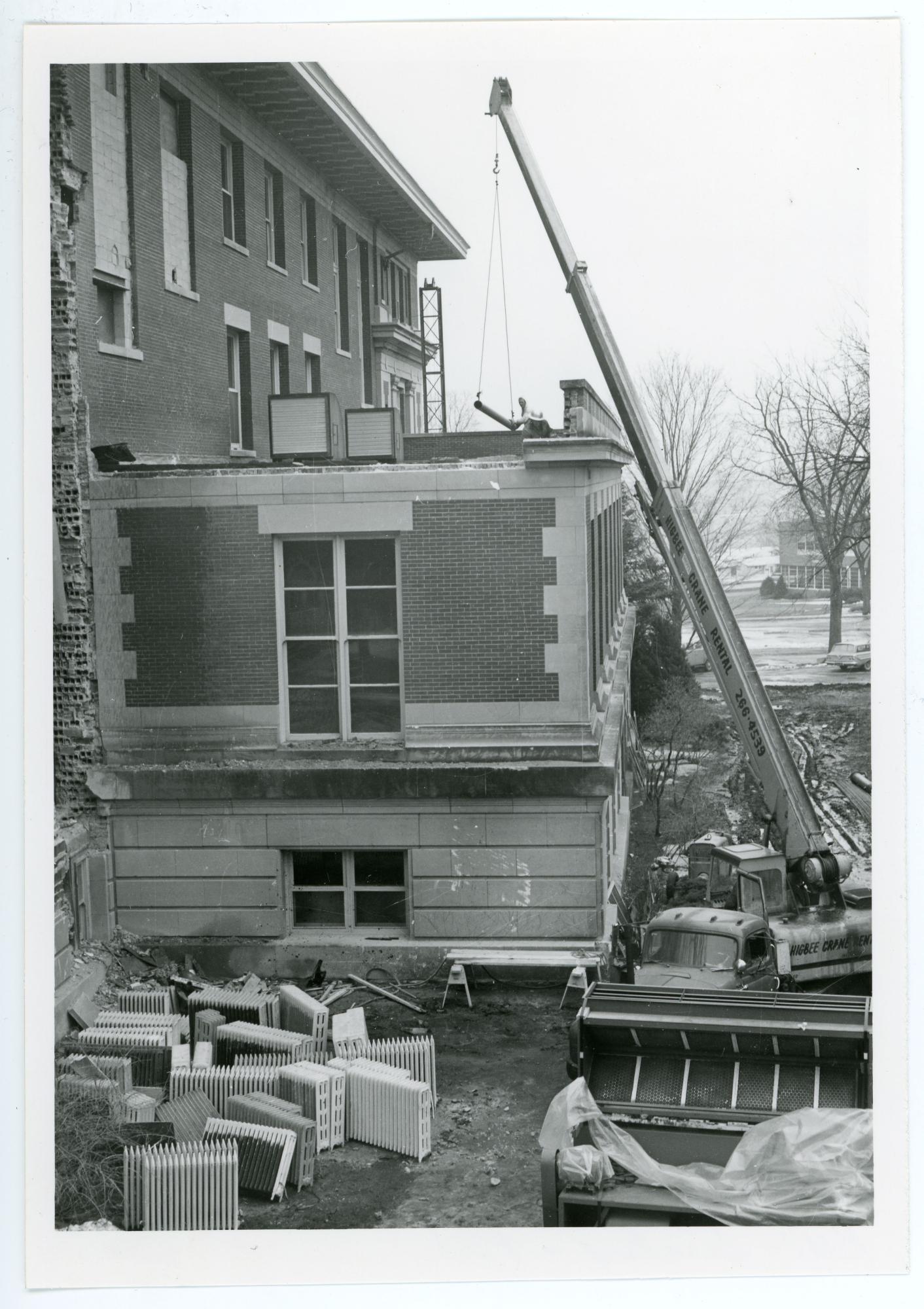
Books were moved from Seerley Hall to the new Library in August 1964. In the fall of 1964, Physical Plant Director Melvin Manion reviewed remodeling plans for Seerley Hall with the hope that work could get underway soon and possibly be completed by September 1965. By April 1965, construction crews were at work on a new staircase on the northwest corner of the building.
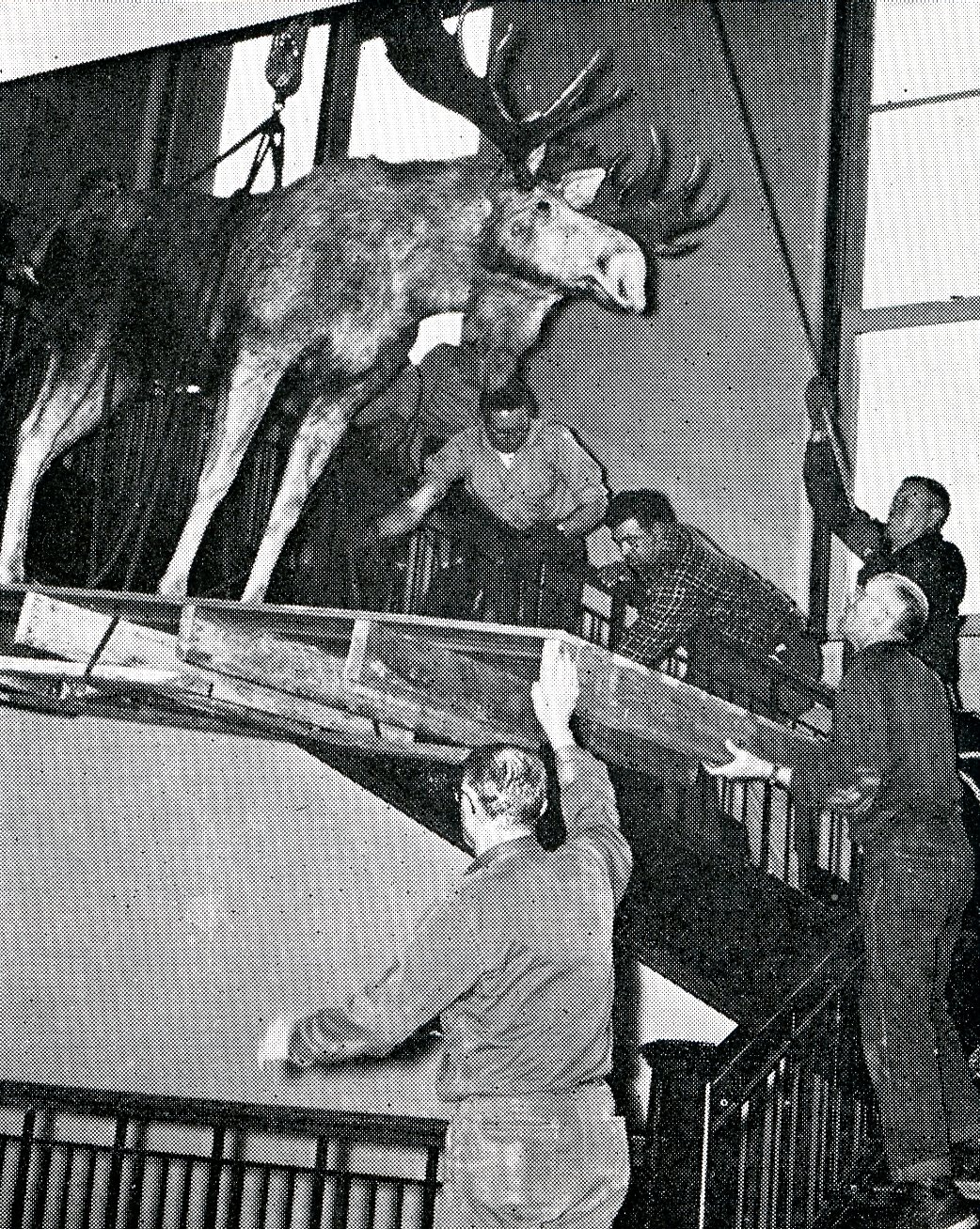
Most of the building, with the exception of the partitioned former reading room, was ready for classes for the fall term of 1965. The ground floor contained twenty faculty offices as well as the office of the Department of Business and Business Education. Data processing equipment and classrooms occupied the second floor. The third floor contained classrooms. And the fourth floor contained a secretarial suite and a model office.
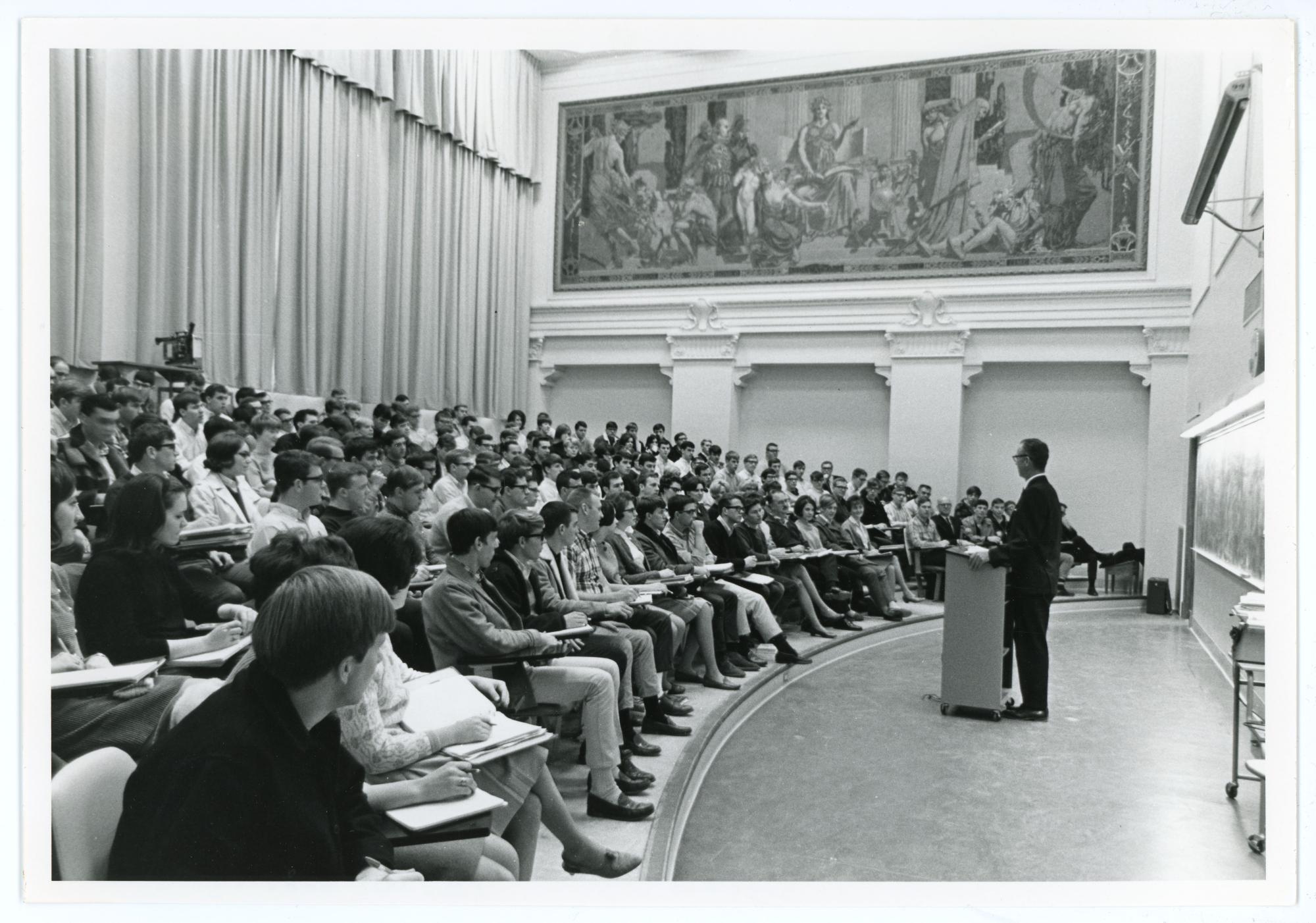
Seerley Hall bore the brunt of the extraordinary and unprecedented growth in the enrollment of business students in the 1970s and 1980s. Unfortunately, the remodeling project of the middle 1960s had prepared the building for a continuing, but modest interest in business education. Planners of that day could not have foreseen that this teacher preparation curriculum would be overwhelmed by students who wished to study "pure" business curricula such as accounting, finance, marketing, and management. This period was a time of constant struggle to make Seerley Hall fit purposes for which it was not intended. Large rooms were divided into offices. Unsightly ramps were installed. Classes and faculty were shuffled around campus. Administrators attempted to fit developing computer technology into the old structure.
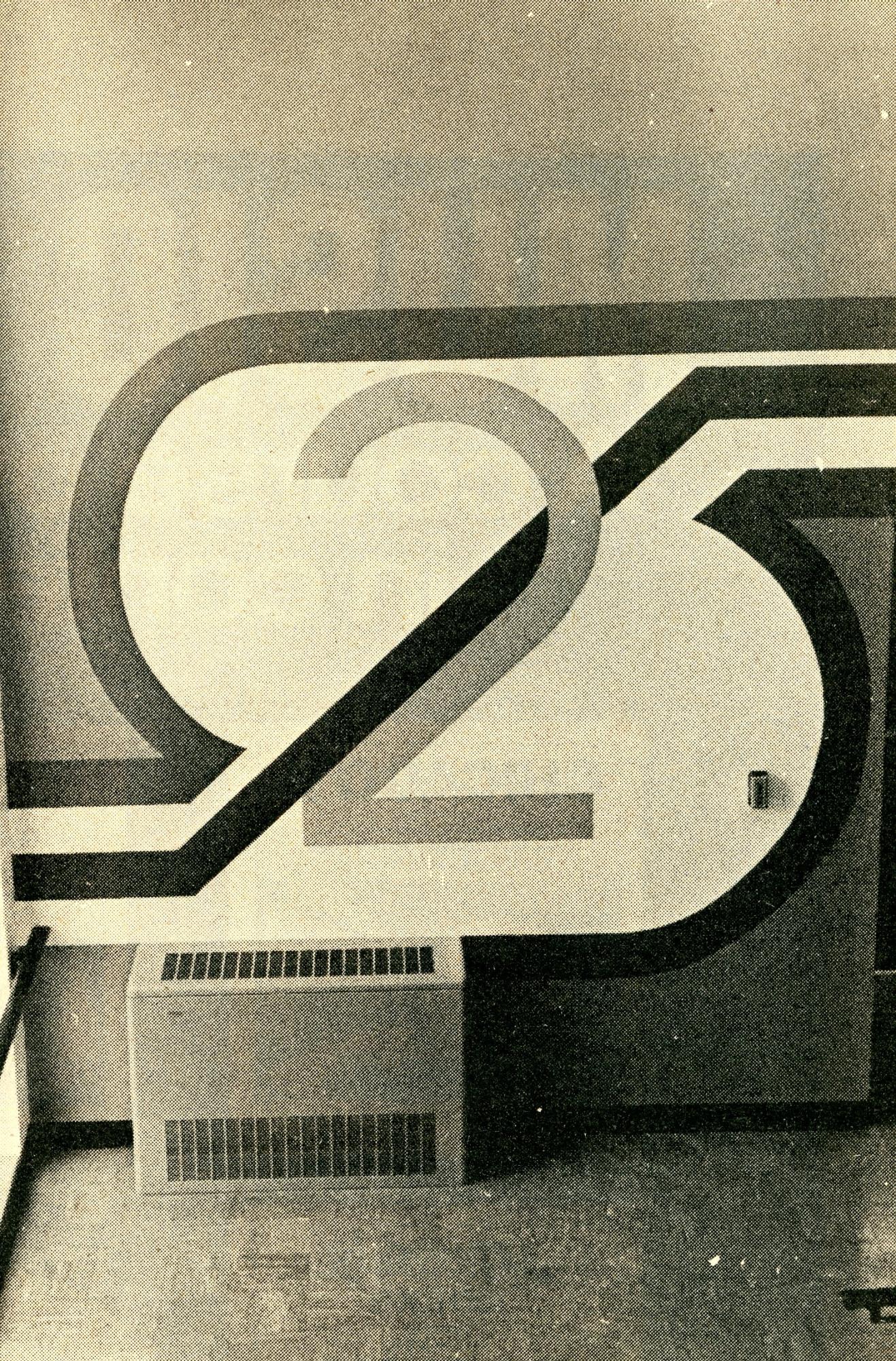
This pressure was relieved only with the opening of the Curris Business Building in the fall of 1990. At that point, Seerley Hall was dilapidated and unfit to house instructional programs at a modern university. So, in July 1990, the Board of Regents approved a $279,000 contract with the Waterloo architectural firm of Thorson, Brom, Broshar, and Snyder to design a $4.7 million renovation project for Seerley Hall. The plans called for designing a modern home for departments in the College of Social and Behavioral Sciences. By September 1990, plans had become more specific: Seerley Hall would house the Department of History, the Graduate College, and the Public Policy program, as well as classrooms and offices. The reading room, which would serve as a site for special meetings and receptions, and the murals would be restored in this project.

Architect Robert Broshar and facilities planning staff members Lee Thomson and Morris Mikkelsen presented schematic plans for the Seerley Hall renovation to the Board of Regents on June 19, 1991. Funding for the project would come from the sale of academic revenue bonds authorized by the General Assembly. The target completion date was set for spring 1993. During this project, Seerley Hall was stripped down to its brick vaulted structural elements. It marked the first time that a significant building on the UNI campus would be renovated down to this level.
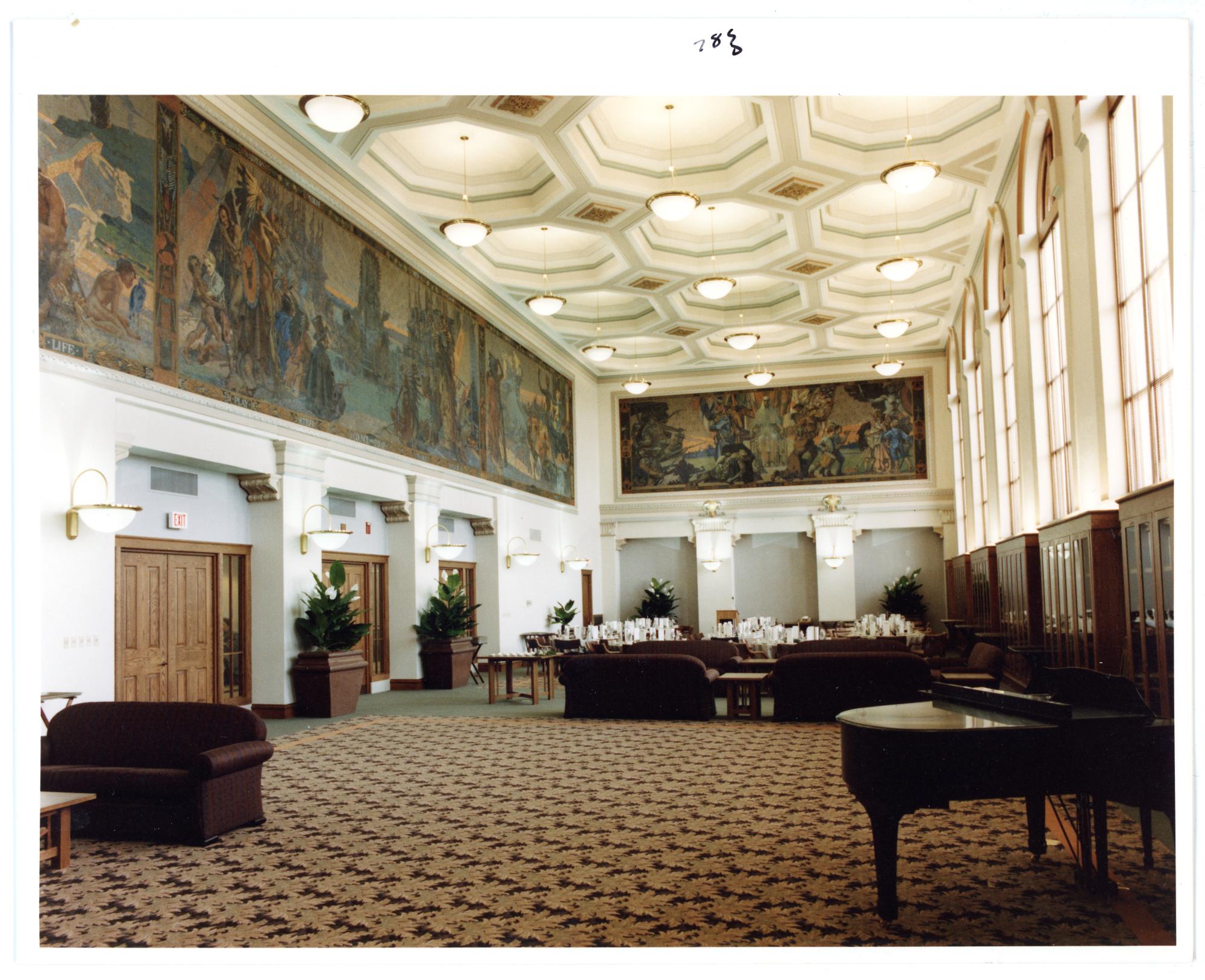
When the building re-opened in 1993, just about everyone was amazed at its elegance and beauty. The reading room, with its period furniture and restored murals, was especially striking. At the re-dedication ceremony on September 8, 1993, Professor William C. Lang spoke on the history of the building and on Homer Seerley, the man for whom the building was named. Homer Culley, a grandson of President Seerley who had been born in the President's House in 1915, attended the ceremony.
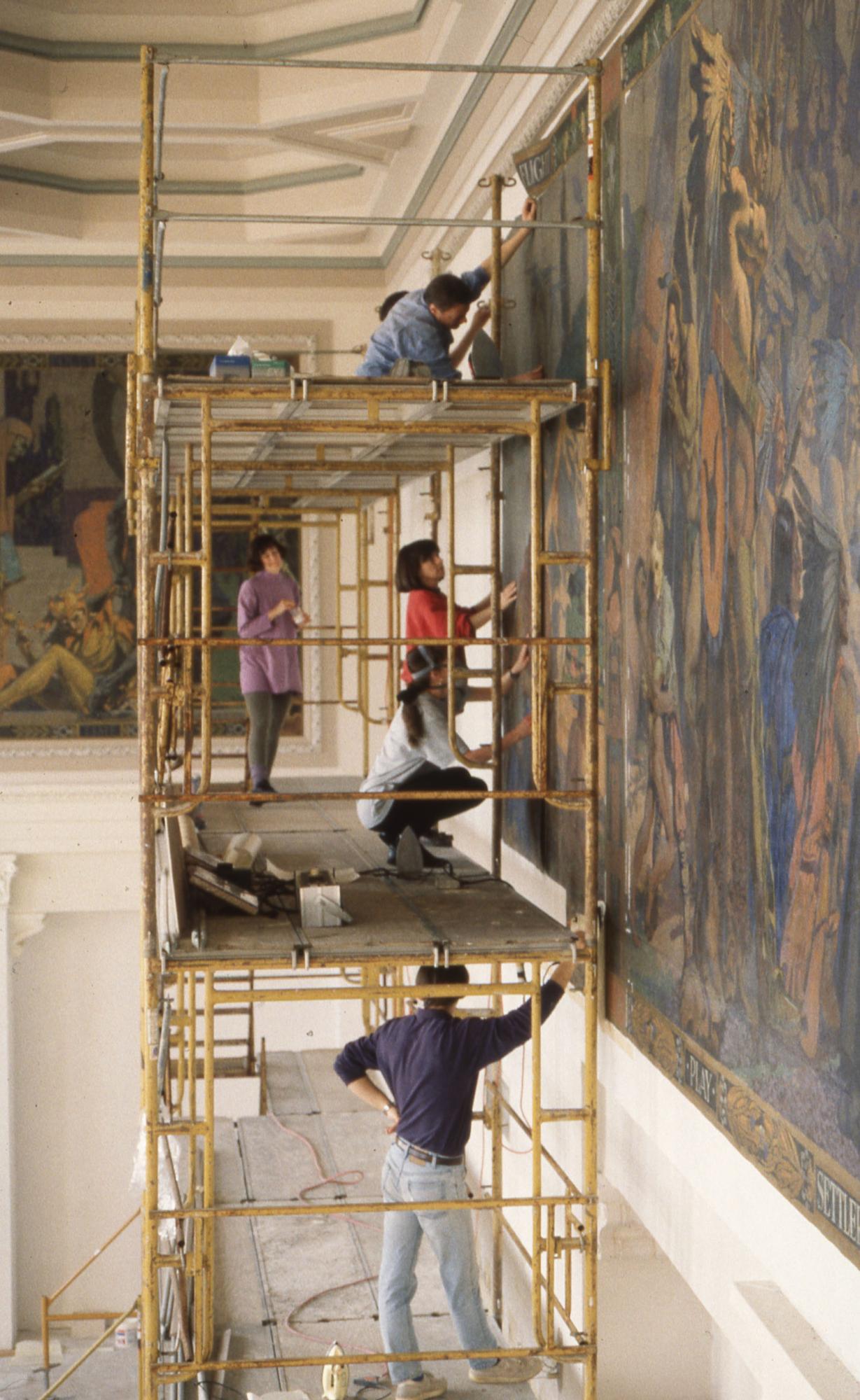

Alleen Howard, widow of Professor Donald Howard, donated funds for a history seminar room that was named in Professor Howard's honor. That room was dedicated on November 9, 1994. In 1996, the university celebrated its 120th anniversary with a display of photographs, artifacts, and text mounted in the reading room by Professor Joanne Goldman's public history students.
In 2001 the office of the President as well as the office of the Vice President and Provost moved from Gilchrist Hall to Seerley Hall. The Graduate College moved from Seerley Hall to the newly-restored Lang Hall.
Compiled by Library Assistant Susan Witthoft and Student Assistant Jennifer Grant; edited by University Archivist Gerald L. Peterson, July 1996; substantially revised by Gerald L. Peterson, with research assistance by Student assistant Jacki Ellenwood and scanning by Library Assistant Gail Briddle, April 2004; last updated, March 22, 2012 (GP); photos and citations updated by Graduate Assistant Eliza Mussmann April 4, 2023.
